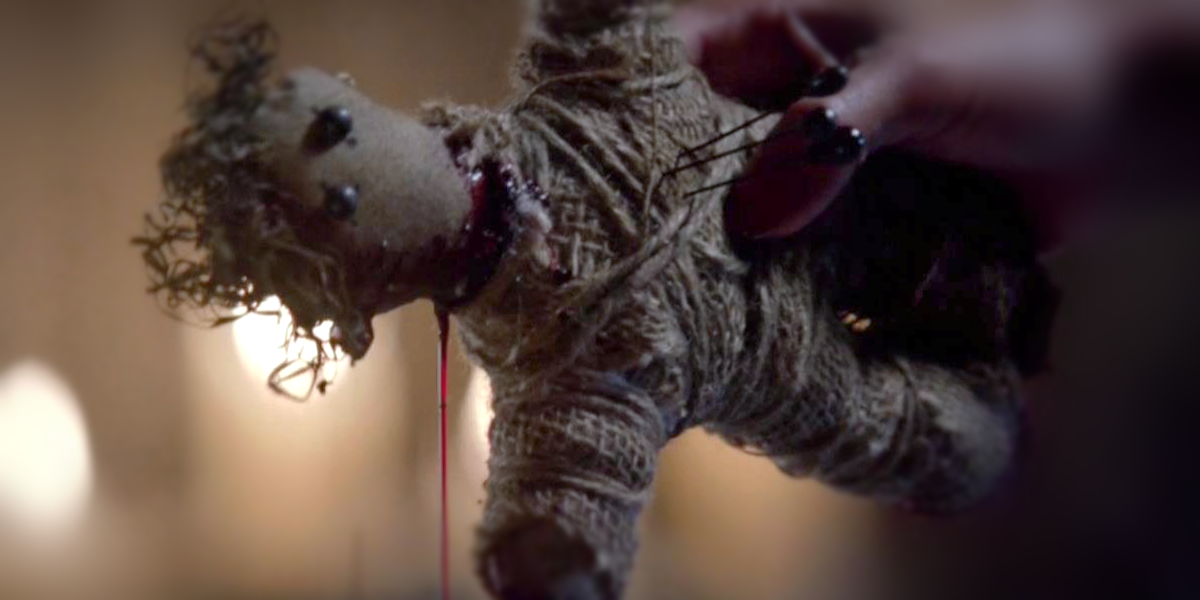Did voodoo curse follow lawmen to Kentwood?
After a woman suggested three Tangipahoa Parish Sheriff’s deputies loaded her stolen treasure on a train and a voodoo priestess cast a spell over them, all three men died of unnatural causes.
The mystery begins on a Wednesday, April 23, 1886, when Mrs. Joseph Brecher, a widow of two years, returned home to her Bayou De Sair plantation to find her gold coins, valued today at over a half-million dollars, missing.
After a lengthy police investigation, farmhands John Henry Green and Alexander Ploughman confessed to stealing the gold on orders from Doctor Solomon Hastings, a New Orleans voodoo practitioner. The bandits collected the gold, they said, to prevent “Doc Soul” from cursing Mrs. Brecher and her children.
Sunday, August 27, detectives with the New Orleans Police Department arrested Dr. Soul at his home on Rampart Street and delivered him to the sheriff in St. John the Baptist Parish, where De Sair Station was located on the west bank of Lake Pontchartrain.
St. John Parish commissioned four Tangipahoa Parish lawmen to escort Dr. Soul back to the city the following Monday. The Times-Picayune’s evening edition recounted the event on August 30:
“Mrs. Brecher and her son Nick met Sheriff F. P. Mix of Tangipahoa Parish and three deputies at the depot. The officers were excited. Dr. Soul had promised them he would show them where he buried the stolen gold if they brought him back to New Orleans.”
“The party proceeded down Howard to Marais and then Orleans Street, with Dr. Soul leading the way. He appeared anxious, stalling for time and stopping to hold long conversations with the officers. Finally, at 10 o’clock, he told them to follow him to No. 28 Orleans Street, where a friend resided, a woman who could assist them in finding the money.”
“The party found the house occupied by an old voodoo priestess who indignantly denied knowledge of the gold and used loud foreign words on those present, words clearly not voodoo blessings. They were glad to leave her.”
“Dr. Soul then said that if officers would take him across the lake, he could find the money. As it became clear that the cunning doctor was misleading the posse, they took him back to the Mississippi Valley Depot and at 4:15 yesterday afternoon he left again by train.”
A States-Item account added that the sheriff of St. John met Sheriff Mix at the depot to escort the doctor back to the jail in Edgard, allowing the Tangipahoa Parish deputies to remain in New Orleans and “await further developments.”
Mrs. Brecher and her son stayed in the city to dine with relatives before taking the evening train to De Sair Station. Curiously, before boarding, they saw the three Tangipahoa Parish Sheriff’s deputies, William Lattimore “W. L.” Lea, Ira Cleveland, and Willis Simmons, loading an enormous steamer trunk onto a boxcar.
Mrs. Brecher recounted this story at Solomon Hasting’s trial for receiving stolen goods. Judge James Evans dismissed Mrs. Brecher’s observations and the case against Dr. Soul, citing a lack of evidence.
The same judge awarded John Henry Green and Alexander Ploughman twenty-four years in the Louisiana State Penitentiary at Angola for their involvement in the robbery.
One year later, the June 26 edition of the St. Tammany Farmer reported:
“This week’s routine weekly report of another killing in Tangipahoa Parish arrived on time last Monday. Kentwood constable W. L. Lea shot and killed a man by the name of Ira Cleveland for resisting arrest at Addison and Simmon’s sawmill.”
Tuesday, July 27, 1897, The Times-Picayune reported:
“In Amite City, this morning at 9 o’clock, the preliminary trial of W. L. Lea and Willis Simmons, charged with the June 29 murder of Ira Cleveland, resumed.”
“The Honorable A. J. Reid and the district attorney wanted to submit the case without argument, but the Honorable Bolivar Edwards desired to lie before the court his views of the case, which he did in a short, able speech. Accordingly, Judge Reid decided that there was no evidence on which to hold Mr. Simmons and ordered him discharged.”
“He ordered the sheriff to hold Lea on the sum of $5000 to await the grand jury’s action. Lea paid the bond in a very few minutes and was released.”
On the stand, Simmons recalled Ira Cleveland telling him, “[Lea and I] are having trouble. So, I am going home to get my gun, come back, and fill that stiff-legged SOB full of so much buckshot that it will take Doc Ellis a week to pick them out.”
The Grand Jury dismissed the case as the court failed to establish the events leading up to the shooting. Some witnesses described Ira Cleveland as angry and gunning for Lea, while an equal number described him as happy and minding his own business at the time of his death.
On Friday, October 17, 1902, The Shreveport Journal reported:
“W. L. Lea, the Kentwood town marshal, was assassinated on Tuesday night. The assassination occurred in Tangipahoa Parish, which has attained prominence for the number and frequency of homicides within its borders. In Bloody Tangipahoa, each bloodletting follows an interval of quiet peace, broken by the crack of a pistol or rifle, felling another victim. The murder of Marshal Lea was the culmination of other killings that have been going on for several years.”
That week, The New Orleans Times-Democrat reported:
“The jury in the case of Willis Simmons and Felda Carter, charged with the murder of W. L. Lea, the marshal of Kentwood, after being locked up all night, returned a verdict of not guilty against Carter. However, the jury could not agree on the guilt or innocence of Simmons, so the judge declared a mistrial.”
Simmons, 69, died later that year in a horse and buggy accident, and today, the gold coins stolen from the De Sair plantation are still officially missing.

